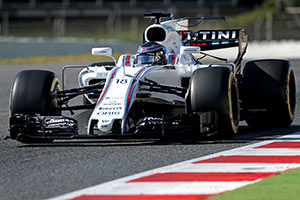Williams were the poster boys for the Mercedes PU, caning speed traps all year round.dren wrote:The low drag philosophy worked well for Williams when they had the large Mercedes PU advantage over the field. It has dwindled the last two years. Even with a top speed advantage, higher DF cars are going to keep their distance in the turn leading up to the straight that I wonder if the low drag will have much of an advantage. The higher DF cars will be able to brake later and carry more speed into corners as well.
The telling problem was the corner speed data, which was middling to bad year round. If you compare it to the Force India,
they were 0.5 seconds down around Monaco, but 0.5 seconds up at Monza. I doubt there is a more accurate way to put the difference in Microcosm.
I think the low drag philosophy was Williams playing a game with averages. Instead of having a car that was an all round competitor relative the competition, they went with a car that almost one dimensionally focused its attributes around the engine. Their best results came at engine circuits(3rd at Canada), and worst around low speed circuits such as Monaco(lapped by a Force India) and Hungaroring(beat down by a Torro Rosso with a 2015 PU).
The upshot is that they can earn more points by bagging the odd podium, rather than eternally squabbling for 8th 9th and 10th.
The problem I have with it is that as Force India have demonstrated, going for low drag solutions will affect you adversely as the season progresses. The FW40 looks to be of a similar mould to the last 3 cars, and given the noise we hear from Renault and Honda about their engines, simple straight-line performance will not cut it.
There needs to be more complexity in the car, and it needs to widen its operational window relative the competition, or I fear Williams will fall even further behind....as the trend against Force India has shown the last 3 years.









